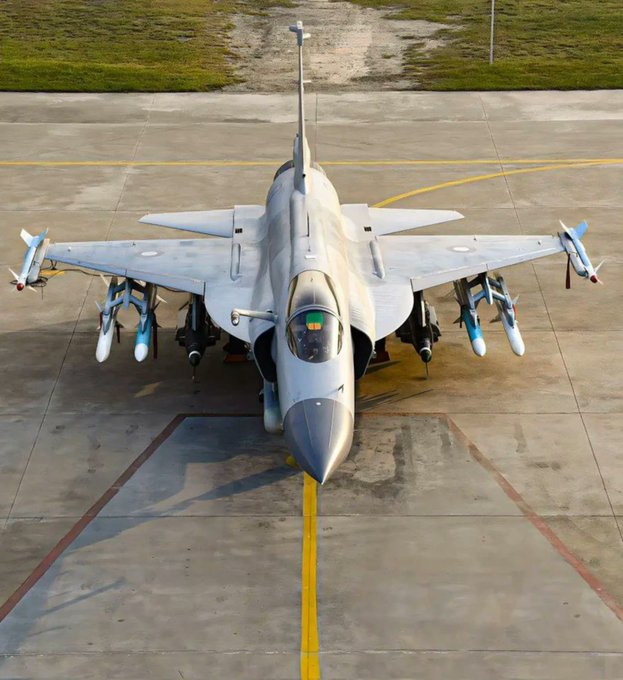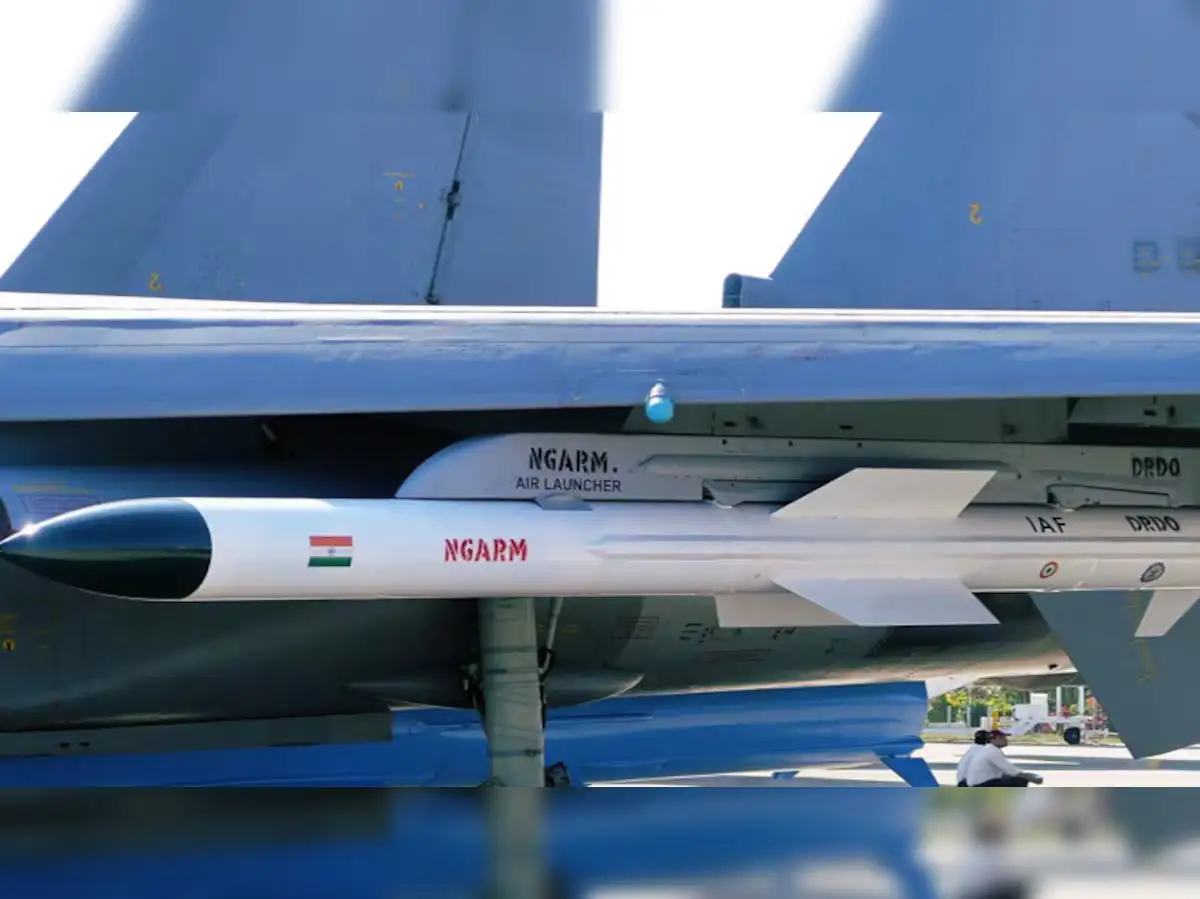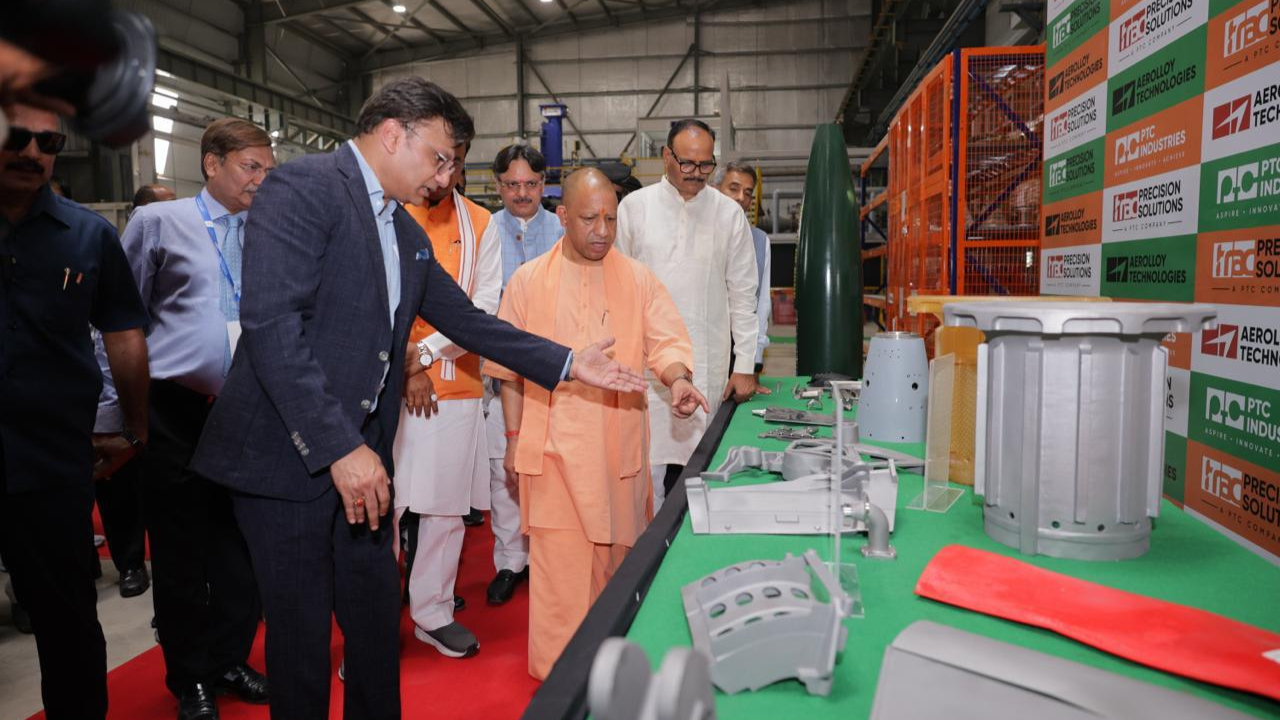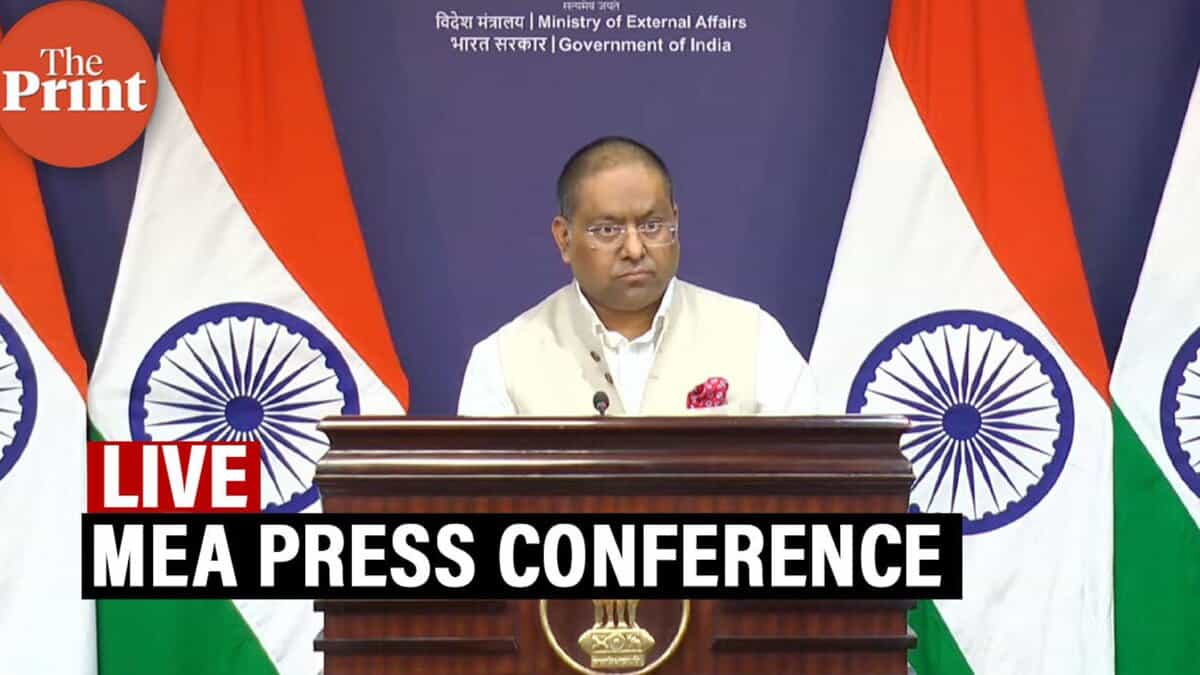admin
SOURCE: RAUNAK KUNDE / NEWS BEAT / IDRW.ORG


India has formally requested additional S-400 air defence systems from Russia following the system’s successful deployment during Operation Sindoor, a recent military operation aimed at neutralizing aerial threats from Pakistan. The S-400, known in India as the ‘Sudarshan Chakra’, played a pivotal role in intercepting and destroying incoming missiles and drones, demonstrating its effectiveness in real-world combat scenarios .
The S-400 system, developed by Russia, is one of the most advanced long-range air defence systems globally. It can track targets up to 600 kilometers away and engage them at distances of up to 400 kilometers. The system is capable of firing four different types of missiles, allowing it to engage a variety of aerial threats, including aircraft, drones, cruise missiles, and ballistic missiles .
Continue readingSOURCE: RAUNAK KUNDE / NEWS BEAT / IDRW.ORG


In a powerful display of air superiority, the Indian Air Force (IAF) shot down at least five Pakistan Air Force (PAF) aircraft during Operation Sindoor, a decisive counteroffensive launched in response to the April 22, 2025, Pahalgam terror attack that killed 26 civilians. At a press conference on May 12, Air Marshal AK Bharti, Director General of Air Operations, confirmed that the IAF’s advanced air defense systems (ADS) and fighter jets neutralized several high-tech PAF aircraft, though he refrained from specifying exact numbers.
Sources cited by the Indian Defence Research Wing (idrw.org) revealed that the downed aircraft included one Mirage-5, two JF-17 Thunder jets, one F-16, and an unidentified fifth aircraft. Bharti also hinted at the destruction of a high-value target, widely speculated to be one of Pakistan’s nine Saab 2000 Erieye airborne early warning and control (AEW&C) aircraft, either shot down or damaged in a strike on a hangar at PAF Base Bholari. This article explores the IAF’s aerial triumphs, the role of its anti-drone and air defense systems, and the strategic implications of these losses for Pakistan.
Continue readingSOURCE: RAUNAK KUNDE / NEWS BEAT / IDRW.ORG


The Hellenic Air Force (HAF), Greece’s air arm, is reportedly showing keen interest in India’s Rudram-1 and Rudram-2 series of air-launched anti-radiation missiles (ARMs) for integration with its fleet of Dassault Rafale fighter jets, according to sources cited by idrw.org. Developed by India’s Defence Research and Development Organisation (DRDO), these supersonic and hypersonic missiles are designed for suppression of enemy air defenses (SEAD) and destruction of enemy air defenses (DEAD), targeting radar, communication systems, and bunkers. Concurrently, the Indian Air Force (IAF) is advancing integration of the Rudram-1 with its Rafale and Tejas Mk1A jets, positioning India as a potential supplier of advanced SEAD solutions.
In contrast, European NATO partners, including France and Germany, face gaps in dedicated anti-radar capabilities, relying on the U.S.-made AGM-88 HARM or awaiting the MBDA RJ10 missile, which is not expected until 2035 with the Rafale F5.
Continue readingSOURCE: AFI


Dr. Sudhir Kumar Mishra, former Director General (BrahMos) at the Defence Research and Development Organisation (DRDO), has categorically dismissed Pakistani media claims that the BrahMos supersonic cruise missile, launched from India’s Su-30 MKI fighter jet, can be intercepted by Pakistan’s air defense systems. In a scathing rebuttal to what he termed “propaganda,” Dr. Mishra asserted that the BrahMos is invincible against any known air defense system globally, including those of Pakistan and China, and even dismissed speculative claims about intercepting hypersonic projectiles.
Speaking to CNN-18, Dr. Mishra emphasized the BrahMos missile’s unparalleled capabilities, developed through a joint venture between India and Russia. “The BrahMos is a supersonic cruise missile. It cannot be intercepted by the air defense systems of Pakistan or China. In fact, it cannot be intercepted by any known defense system in the world,” he stated, underscoring its technological edge. With a speed of Mach 2.8 (nearly three times the speed of sound), the missile’s agility and precision make it a formidable weapon.
Continue readingSOURCE: AFI


In a landmark achievement for India’s defense and aerospace sectors, Aerolloy Technologies Limited, a wholly-owned subsidiary of PTC Industries Limited, inaugurated the world’s largest single-site titanium and superalloy materials plant on May 11, 2025, at the Lucknow node of the Uttar Pradesh Defence Industrial Corridor (UPDIC). The event, graced by Defence Minister Rajnath Singh and Uttar Pradesh Chief Minister Yogi Adityanath, also saw the foundation stones laid for seven additional state-of-the-art facilities under India’s first Strategic Materials Technology Complex.
This milestone positions India among an elite group of nations capable of producing aerospace-grade strategic materials, significantly reducing reliance on costly imports and reinforcing the Atmanirbhar Bharat (self-reliant India) vision.
Continue readingSOURCE: AFI


After a brief surge in stock prices fueled by regional tensions, Chinese defense companies Avic Chengdu Aircraft Co Ltd and Zhuzhou Hongda Electronics Corp Ltd saw significant declines today, reflecting a sharp reversal in investor sentiment. The stock of Avic Chengdu, the manufacturer of China’s J-10C fighter jet, slumped by as much as 9.31% to 86.93 yuan in intraday trading, closing down 7.51% at 88.66 yuan.
Similarly, Zhuzhou Hongda, the maker of the PL-15E beyond-visual-range air-to-air missile (BVRAAM), experienced a drop of over 6.5%, with some reports indicating a fall as high as 7%. These declines come just a day after the Indian military confirmed the recovery of intact PL-15E missiles within Indian territory, raising questions about the effectiveness of Chinese-made weaponry.
Continue readingSOURCE: PTI


India’s first manned deep ocean mission ‘Samudrayaan’ into a 6,000-metre depth using the manned submersible vehicle ‘Matsya’ is expected to be launched by the end of 2026, National Institute of Ocean Technology (NIOT) Director Balaji Ramakrishnan said on Tuesday.
He was speaking after inaugurating a five-day national training programme on the ‘role of fisheries in the blue economy’ at the ICAR-Central Marine Fisheries Research Institute (CMFRI) here.
Continue readingSOURCE: ANI


Indian defence sector stocks, which had recently corrected from their highs, have again been soaring over the past weeks, much of it due to the recent flare-up of tensions with Pakistan. The successful display of India’s indigenously developed systems against the adversary last week also lent support to the defence stocks basket. The conflict with Pakistan also alluded to the fact that it is critical to achieve self-reliance in defence manufacturing.
The Nifty India Defence index has climbed over 30 per cent over the past three months, reflecting investor confidence in the strategic importance and commercial growth of India’s domestic defence sector. The Nifty India Defence index tracks listed companies that derive a significant proportion of their revenues from the sale of defence-related products and services.
Continue readingSOURCE: AFI


In a seismic shift for global military dynamics, India’s indigenous AkashTeer drone system has emerged as a game-changer, leaving the United States, China, and Pakistan reeling in its wake. Unveiled during the recent India-Pakistan conflict, this revolutionary AI-powered defense platform—developed by the Defence Research and Development Organisation (DRDO), Bharat Electronics Limited (BEL), and the Indian Space Research Organisation (ISRO)—has blindsided adversaries and allies alike with its unmatched stealth, precision, and autonomy. U.S. analysts, caught off guard, are now admitting that AkashTeer may rival or even surpass current American stealth drone capabilities, prompting urgent internal reviews of India’s underestimated technological ascent.
AkashTeer is not a singular drone or weapon but a sophisticated “system-of-systems”—a networked defense cloud integrating satellites, stealth drone swarms, ground radars, mobile war rooms, and AI processors. This ecosystem operates as a self-updating, auto-striking platform capable of real-time decision-making without human intervention. Its key components include:
Continue readingSOURCE: ANI


The Ministry of External Affairs on Tuesday clarified India’s stance on Pakistan’s ‘nuclear leakage’ claims regarding alleged damage to Pakistan’s nuclear facility in Kirana Hills during India’s Operation Sindoor. The official spokesperson of the Ministry of External Affairs, Randhir Jaiswal, said during the weekly press conference that Pakistan’s government officially denied these allegations on record. “There’s talk of some social media posts about Egyptian, American aircraft, etc., but those questions are for them to answer, not for us. In the defence briefing, our side made things very clear as to what the target was, etc. The Pakistan Foreign Minister also has made some comments,” he said.
Clarifying India’s stance, Jaiswal said that the Indian military action was in the conventional domain, targeting terrorist infrastructure without escalating to nuclear threats. “The military action from our side was entirely in the conventional domain. This was also made very clear in the defence briefing yesterday. There were some questions also which were asked.
Continue readingSOURCE: ANI


The Ministry of External Affairs on Tuesday emphasised that India’s Operation Sindoor successfully targeted and destroyed terrorist centres in Bahawalpur, Muridke, Muzaffarabad, and other locations, significantly degrading Pakistan’s military capabilities and putting key air bases out of action. Addressing the weekly media briefing, the official spokesperson of the Ministry of External Affairs, Randhir Jaiswal, said that if Pakistani Foreign Minister Ishaq Dar wishes to project these as achievements, he is welcome to do so.
Regarding the interview that the Pakistani Foreign Minister gave last week as a result of Operation Sindoor, Pakistan has seen its terrorist centres in Bahawalpur, Muridke, Muzaffarabad and other places destroyed. You have been informed of it in several of the briefings that we’ve had. Thereafter, its military capabilities were significantly degraded by us, and key air bases were effectively put out of action. If the Pakistani Foreign Minister wishes to project these as an achievement, obviously he is welcome to do so,” he said. Jaiswal said that India has decimated the critical infrastructure that conducts terror activities and has always maintained its position.
Continue readingSOURCE: ANI


Recent satellite images captured by Maxar Technologies on Tuesday revealed significant damage to multiple air bases in Pakistan. The images show damage to four Pakistani air bases: Nur Khan Air Base in Rawalpindi, PAF Base Mushaf in Sargodha, Bholari Air Base, and PAF Base Shahbaz in Jacobabad. Satellite images taken on April 25, 2025, and May 10, 2025, show damage to air base facilities, indicating a possible strike or attack at the Nur Khan Air Base in Rawalpindi.
The second image shows significant damage done precisely, showing the accuracy of the Indian Air Force.
Continue readingSOURCE: PTI


Pakistan on Tuesday declared a staff member of the Indian High Commission here “persona non grata” for engaging in activities what it called “incompatible” with his privileged status.
A statement issued by the Ministry of Foreign Affairs also said that the concerned official has been directed to leave Pakistan within 24 hours. “The Government of Pakistan has declared a staff member of the Indian High Commission, Islamabad, as persona non grata for engaging in activities incompatible with his privileged status,” it said.
Continue readingSOURCE: ANI


Official Spokesperson of the Ministry of External Affairs Randhir Jaiswal on Tuesday lauded the Indian armed and air forces, stating that their might compelled Pakistan to stop firing. Addressing a press conference in the national capital, Jaiswal said that Indian forces launched an attack on Pakistani air force bases due to which the other side were willing to stop military action. “You will of course appreciate that early on (May) 10th morning, we had mounted an extremely effective attack on key Pakistani Air Force bases.
That was the reason they were now willing to stop firing and military action. Let me be clear. It was the force of Indian arms that compelled Pakistan to stop its firing,” he said. Jaiswal again made it clear that the policy of Indian side on the Jammu and Kashmir issue remains unchanged. He said that the issue of the union territory is a bilateral one, and it pertains to the illegal occupation of Pakistan of Jammu and Kashmir.
Continue readingSOURCE: PTI


India on Tuesday said the Bangladesh interim government’s decision to ban all activities of former prime minister Sheikh Hasina’s Awami League party is “concerning”. New Delhi also called for early holding of “free, fair and inclusive” elections in Bangladesh. Bangladesh’s interim government headed by Muhammad Yunus decided to ban the Awami League under the Anti-Terrorism Act on May 12.
“The ban on the Awami League without due process is a concerning development,” External Affairs Ministry Spokesperson Randhir Jaiswal said.“As a democracy, India is naturally concerned at curtailment of democratic freedoms and shrinking political space. We strongly support the early holding of free, fair and inclusive elections in Bangladesh,” he said at a media briefing.
Continue reading